Non-woven Types
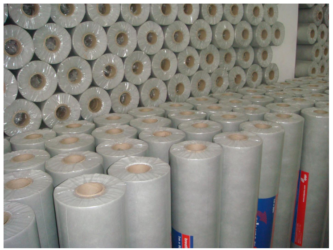
The main fibers used for non-woven production are polypropylene (PP) and polyester (PET). In addition, there are nylon (PA), viscose fiber, acrylic, ethylene (HDPE), and chlorine (PVC). According to the application requirements, non-woven fabrics are divided into two categories: disposable application type and durable type.
Contents
According to the production process is divided into.
1、Spunlace non-woven
The hydroentanglement process is a high-pressure, micro-fine water jet that is applied to one or more layers of fibers, causing the fibers to entangle with each other, thus reinforcing the web with a certain strength.
2.Thermal laminated nonwoven
Thermally bonded nonwoven fabric is a fibrous or powdered hot melt bonding reinforcement added to the fiber web, which is then heated and melted and cooled to reinforce the fabric.
3.Pulp air flow non-woven
Air-flow web nonwoven can also be called dust-free paper and dry paper non-woven. It adopts the air flow forming technology to open the wood pulp fiber board into a single fiber state, and then use the air flow method to make the fiber agglomerate on the web curtain, and then the fiber web is reinforced into cloth.
4.Wet non-woven
Wet nonwoven fabric is placed in the aqueous medium to open the fiber raw materials into a single fiber, while making different fiber raw materials mixed, made of fiber suspension pulp, suspension pulp transported to the web formation mechanism, fiber in the wet state into a web and then reinforced into cloth.
5.Spunbond Non-woven
Spunbond non-woven is formed after the polymer has been extruded and stretched to form a continuous filament, the filament is laid into a web, and the web then undergoes its own bonding, thermal bonding, chemical bonding or mechanical reinforcement methods to make the web into a non-woven fabric.
6.Meltblown non-woven
The process of meltblown non-woven: polymer feeding — melt extrusion — fiber formation — fiber cooling — web formation — reinforcement into cloth.
7.Needle-punched non-woven
Needle punching non-woven is a kind of dry non-woven. Needle punching non-woven uses the piercing effect of felting needles to reinforce the fluffy fiber web into cloth.
8.Sewn non-woven fabric
Sewn non-woven fabric is one kind of dry non-woven fabric. Sewn non-woven fabric uses the warp knitting coil structure to reinforce the fiber web, yarn layer, non-textile materials (such as plastic sheet, plastic thin metal foil, etc.) or their combination to make non-woven fabric.
9.Hydrophilic non-woven
It is mainly used in the production of medical hygiene materials to obtain a better feel and not scratch the skin. Like sanitary napkins and sanitary pads are using the hydrophilic function of hydrophilic non-wovens.
2. Non-woven difference
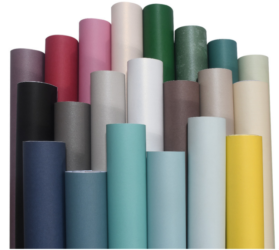
The difference between nonwoven and dust-free cloth
Non-woven fabric, also known as non-woven fabric, is a new generation of environmental protection materials, with water repellent, breathable, flexible, non-combustible, non-toxic, non-irritating, colorful and other characteristics
. If the non-woven fabric is placed outdoors by natural decomposition, its longest life span is only 90 days, placed indoors within 5 years decomposition, burning non-toxic, tasteless, and without any residual material, so as not to pollute the environment, suitable for washing.
It directly uses polymer slices, staple fibers or filaments to form a new type of fiber product with soft, breathable and flat structure through various web forming methods and consolidation technology.
It has the environmental performance that plastic products do not have, and its time of being naturally degraded is much lower than that of plastic bags, therefore, the non-woven bags made of non-woven fabric are also recognized as the most economical and affordable environmental protection shopping bags.
The non-woven cloth is made of 100% polyester fiber double weave, with soft surface, easy to wipe sensitive surfaces, friction without fiber removal, good water absorption and cleaning efficiency.
The cleaning and packaging of the products are done in the ultra-clean workshop.
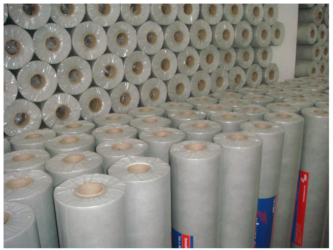
Optional edging for dust-free cloth is generally available: cold cutting, laser edging, ultrasonic edging.
Microfiber dust-free cloth is generally sealed with laser and ultrasonic perfect edge;
dust-free cloth, dust-free wiping cloth, microfiber dust-free cloth, microfiber wiping cloth with 100% continuous polyester fiber double-woven surface is soft, can be used to wipe sensitive surfaces, low dust production and friction does not lose fiber, has good water absorption and cleaning efficiency.
It is especially suitable for dust-free clean room.
The edges of dust-free cloths, dust-free wiping cloths, microfiber dust-free cloths, microfiber wiping cloths are sealed by the most advanced edge cutting machine, so that no particles and threads will be left after wiping, and the dirt removal ability is strong.
3. History of Non-wovens
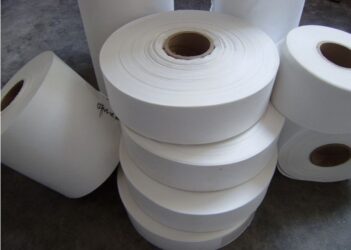
A, the development of non-woven textile industry
By 1998, the worldwide consumption of non-wovens had reached 2.4 million tons. In 1970, the consumption was only 400,000 tons, while by 2007 it was expected to reach 4 million tons.
Producers of non-wovens are mainly concentrated in the United States (41% of the world), Western Europe accounts for 30%, Japan accounts for 8%, China’s production accounts for only 3.5% of the world, but its consumption is 17.5% of the world, in 2018, China’s non-woven production 5,932,200 tons, accounting for 37.91% of the global total, the world’s first production capacity.
Man-made fibers still dominate the production of non-wovens, and this situation will not change significantly until 2007. Worldwide, 63 percent of the fibers used in the production of nonwovens are polypropylene, 23 percent polyester, 8 percent viscose, 2 percent acrylic fibers, 1.5 percent polyamide and the remaining 3 percent other fibers.
There has been a significant increase in the use of non-wovens for hygiene absorbent materials, medicine, transport and footwear.
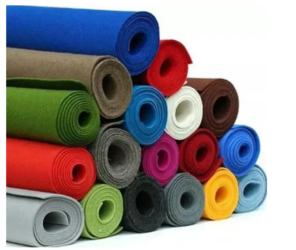
Second, non-woven production and consumption
The global consumption of non-woven fabrics was 800,000 tons in 1983, and grew to 1.1 million tons in 1985, 1.4 million tons in 1988, and 2.4 million tons in 1998.
The consumption of man-made fibers for various textiles was 16.9 million tons in 1983, grew to 20.4 million tons in 1988 and 30.4 million tons in 1998, and is expected to reach 37 million tons in 2005 and 38.3 million tons in 2007.
The growth rate of consumption of man-made fibers in non-woven production is expected to reach 10% by 2005 and 10.4% by 2007. Part of the reason for such a rapid growth in the consumption of the non-wovens industry is the increase in auxiliary industries in China, Southeast Asia, Latin America and the Middle East.
Third, non-woven fabrics affect the growth rate of factors
All factors affecting the growth of man-made fibers can more or less have an impact on textiles made of man-made fibers, among which the greatest impact is on non-woven textiles.
Population growth factors have a smaller impact on non-wovens than on other textiles used in apparel. However, if we consider the important use of non-wovens in baby diapers, population growth is also an important factor. The partial replacement of natural fibers has a greater impact on textiles, but not on non-wovens, which are essentially dependent on man-made fibers for their production.
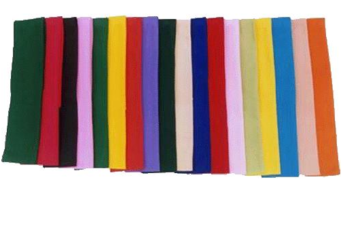
The commercial development of man-made fibers and the professional application of non-wovens: The establishment of international economic treaties has led to growth in the trade of microfibers, composite fibers, biodegradable fibers and new polyester fibers.
This has a significant impact on non-wovens, but not on apparel and knitted textiles.
Replacing textiles and other supplies: This includes being replaced by non-woven textiles, textiles for knitting, plastic films, polyurea foam, wood pulp, leather, etc.
This is determined by the cost and performance requirements that the product needs to have.
The introduction of new, more economical and efficient production processes: i.e. various articles made from polymers, the application of new competitive non-wovens and the introduction of special fibers and additives for non-woven textiles.
The three main fibers used in the production of non-wovens are polypropylene fibers (62% of the total), polyester fibers (24% of the total) and viscose fibers (8% of the total). Between 1970 and 1985, viscose fibers were the most used in non-woven production, and between 2000 and 2005, polypropylene and polyester fibers began to dominate in the field of hygiene absorbent materials and medical textiles. In the early market of non-woven production, the use of nylon was high.
From 1998 onwards, the use of acrylic fibers started to rise, especially in the field of artificial leather manufacturing.
There are many projects of huge scale in various constructions in China, such as the Three Gorges Project, Xiaolangdi Project, environmental protection projects, western development, infrastructure construction, etc.
These will greatly promote the consumption of geotextiles, filtration materials, waterproof materials and packaging materials. In addition, the increase of domestic consumers’ income will also give a strong impetus to the consumption of various hygienic absorbent products and air filtration materials, medical and sanitary supplies and labor protection and sports goods.
Therefore, China’s non-woven industry has great potential for future growth.
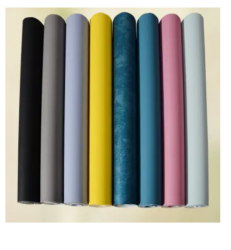
3.Non-woven Main products
Medical non-woven products are textiles for medical hygiene made from chemical fibers including polyester, polyamide, polytetrafluoroethylene (PTFE), polypropylene, carbon fiber and glass fiber.
They include disposable masks, protective gowns, surgical gowns, isolation gowns, laboratory gowns, nurses’ caps, surgical caps, doctors’ caps, surgical kits, maternity kits, first aid kits, diapers, pillowcases, bed sheets, quilt covers, shoe covers and other disposable medical consumables series.
Compared with the traditional cotton woven medical textiles, medical non-woven fabrics have the characteristics of high filtration of bacteria and dust, low surgical infection rate,
easy sterilization and sterilization, and easy to compound with other materials. Medical non-woven products as disposable products, not only convenient to use, safe and hygienic, but also can effectively prevent bacterial infection and medical cross-infection.
In China, the investment for medical and health care industry has reached more than 100 billion yuan, of which the total output value of hygiene products and materials reached about 64 billion yuan, and to diversify the direction of development.
Flour finishing bag
Flour bag made of non-woven fabric is light, environmentally friendly, moisture-proof, breathable, flexible, flame retardant, non-toxic and non-irritating, recyclable, etc.
It is an internationally recognized environmental product for protecting the ecology of the earth and is widely used in all kinds of small packages of rice and flour, such as: wheat flour, corn flour, buckwheat flour.
Rice, etc. These non-woven products are printed with ink, beautiful, realistic colors, non-toxic, tasteless and non-volatile, more environmentally friendly and clean than ink printing, fully meeting the modern requirements of environmental protection.
Due to the reliable quality of the product, the price is affordable and the service life is long. The main specifications are 1kg, 2.5kg, 5kg, 10kg and other specifications of rice and flour fine bags, packaging bags, etc.
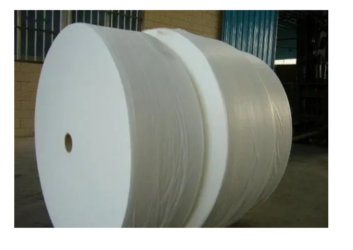
Fashion shopping bags
Nonwoven bags (also known as non-woven bags, English: Nonwoven bags) is a green product, tough and durable, beautiful, breathable, reusable, washable, screen-printed advertising, mark, long service life, suitable for any company, any industry as advertising, gifts.
Consumers get a beautiful non-woven bag while shopping, and businesses get the invisible advertising, the best of both worlds, so non-woven fabrics are becoming more and more popular in the market.
The product is made of non-woven fabric, which is a new generation of environmentally friendly materials, moisture-proof, breathable, flexible, light, non-combustible, easy to decompose, non-toxic and non-irritating, colorful, inexpensive, recyclable and so on.
The material can be placed outdoors for 90 days to decompose naturally, placed indoors for up to 5 years, non-toxic, tasteless, and no residual material when burning, thus not polluting the environment, and is internationally recognized as an environmentally friendly product to protect the ecology of the earth.

 By Coco Ho
By Coco Ho


